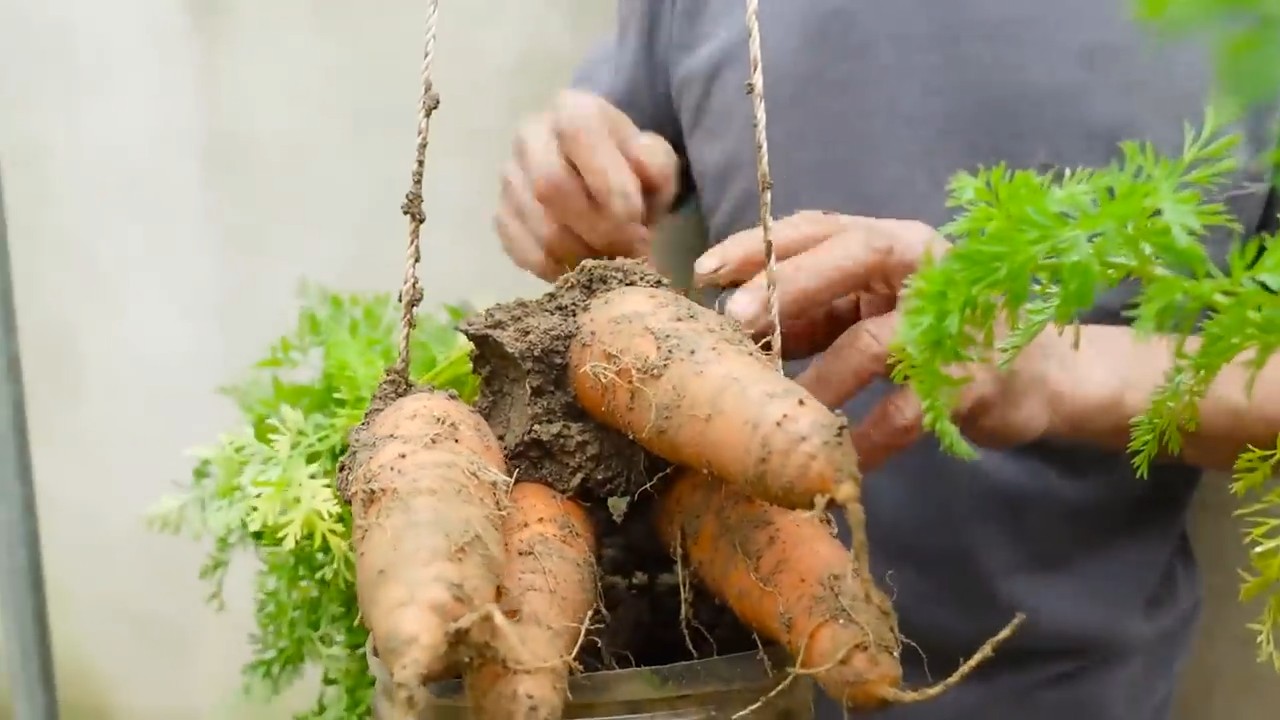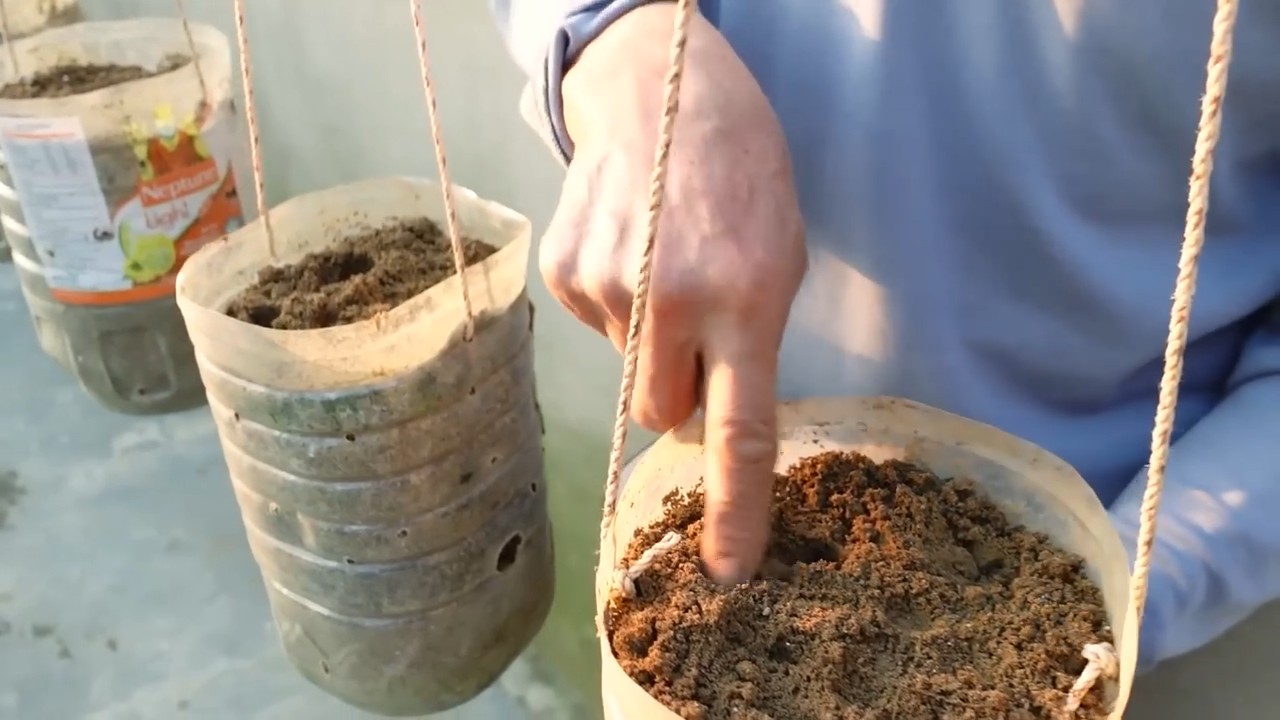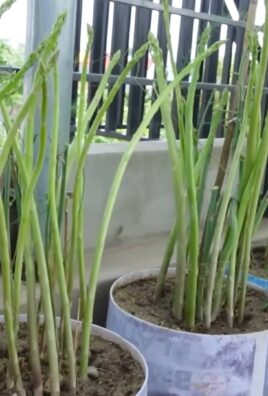Grow carrots at home, even if you think you don’t have a green thumb! Have you ever dreamed of pulling vibrant, crunchy carrots straight from your own backyard? Imagine the satisfaction of serving a salad made with ingredients you nurtured from seed to table. It’s more achievable than you might think, and this DIY guide is your key to unlocking that dream.
For centuries, cultivating carrots has been a rewarding practice. From their humble beginnings as wild, pale roots to the vibrant orange varieties we know and love today, carrots have nourished communities worldwide. They’ve been a staple in diets and even held symbolic significance in various cultures. But you don’t need to be a seasoned farmer to enjoy the fruits (or rather, vegetables!) of your labor.
In today’s world, where fresh, healthy produce can be expensive and sometimes lacking in flavor, learning to grow carrots at home offers a fantastic solution. Not only will you save money, but you’ll also have access to the freshest, most flavorful carrots imaginable. Plus, gardening is a fantastic stress reliever and a wonderful way to connect with nature. I’m here to show you some simple, effective DIY tricks and hacks that will help you cultivate a thriving carrot patch, no matter your experience level. Let’s get started!

Growing Carrots in Your Own Garden: Here’s How!
Hello dear garden friends! I love harvesting fresh vegetables from my own garden, and carrots are definitely among my favorites. They are not only super delicious but also rich in vitamins and relatively easy to grow. In this article, I will show you step-by-step how you can grow your own carrots at home – whether in the garden, in a raised bed, or even in a pot on the balcony. Let’s get started!
Preparation: The Key to Success
Before we start the actual planting, good preparation is the be-all and end-all. This involves choosing the right location, preparing the soil, and selecting the appropriate carrot variety.
- The Location: Carrots love the sun! Choose a sunny spot that gets at least 6 hours of direct sunlight per day. Partial shade is also possible, but the carrots may not grow as large and sweet.
- The Soil: This is really important! Carrots need loose, well-draining soil. Heavy, clay-like soils are a no-go, as the carrots can struggle to develop in them and often end up crooked and forked. The soil should also be free of stones, as stones hinder the growth of the roots.
- Variety Selection: There are countless carrot varieties that differ in size, shape, color, and time to maturity. For growing in pots, for example, short varieties like ‘Paris Market’ or ‘Rondo’ are suitable. For the garden, you can choose from a wide range and select varieties like ‘Nantes’, ‘Berlicum’, or ‘Flakkee’. It’s best to check with a specialist retailer or online to see which varieties are best suited for your region and your needs.
- The Right Time: Carrots are relatively cold-tolerant and can therefore be sown early in the year. In most regions, sowing is possible from March or April, as soon as the ground is no longer frozen. for a late harvest, you can also sow in July or August.
Step-by-Step Guide: Sowing and Caring for Carrots
Now let’s get down to it! Here is a detailed guide on how to successfully sow and care for your carrots:
- Prepare the Soil:
- Loosen the soil thoroughly. Remove stones, roots, and other obstacles.
- Improve the soil structure by incorporating compost or sand. This ensures better drainage and aeration.
- Make sure the soil is not too acidic. A pH value between 6.0 and 7.0 is ideal. If necessary, you can add lime to raise the pH.
- Make Seed Furrows:
- With a rake or a hoe, create seed furrows about 20-30 cm (8-12 inches) apart.
- The furrows should be about 1-2 cm (0.4-0.8 inches) deep.
- Sowing:
- Carrot seeds are very small, so it’s important not to sow them too densely. It’s best to mix the seeds with sand to distribute them more easily.
- Sprinkle the seeds evenly into the furrows.
- Cover the seeds with a thin layer of soil.
- Watering:
- Water the furrows gently so that the seeds are not washed away.
- Keep the soil moist, but not wet, for the next few weeks.
- Thinning:
- Once the seedlings are about 2-3 cm (about 1 inch) tall, you need to thin them. This means removing the weakest plants so that the remaining plants have enough space to grow.
- The distance between the plants should be about 3-5 cm (1-2 inches).
- Watering:
- Water the carrots regularly, especially during dry periods.
- Avoid waterlogging, as this can lead to root rot.
- Weeding:
- Keep the bed free of weeds, as weeds rob the carrots of nutrients and light.
- It’s best to weed by hand to avoid damaging the delicate carrot roots.
- Fertilizing:
- Carrots are not heavy feeders and therefore do not require much fertilizer.
- However, a light application of compost or organic fertilizer is recommended.
- Avoid nitrogen-rich fertilizers, as these can lead to excessive foliage growth and less developed roots.
- Pest Protection:
- Carrots can be attacked by various pests, such as the carrot fly.
- To keep the carrot fly away, you can stretch an insect protection net over the bed.
- Companion planting with onions or garlic can also help deter pests.
The Harvest: The Reward for Your Efforts
After about 2-4 months, depending on the variety, your carrots will be ready to harvest.
- Harvest Time: Carrots are ready to harvest when they have reached the desired size. You can gently pull one carrot out of the ground to check if it is ripe.
- Harvesting Method: Loosen the soil around the carrots with a digging fork or a spade. Then gently pull the carrots out of the ground by their foliage.
- Storage: Remove the foliage and soil from the carrots. Store the carrots in a cool, dark, and moist place, such as a cellar or the refrigerator. They keep particularly well when stored in sand.
Growing Carrots in Pots: A Great Alternative for Balconies and Patios
Even if you don’t have a garden, you don’t have to miss out on homegrown carrots. Growing them in a pot is a great alternative for balconies and patios.
- Pot Size: Choose a pot with a diameter of at least 20 cm (8 inches) and a depth of at least 30 cm (12 inches).
- Soil: Use a high-quality, well-draining vegetable soil.
- Sowing: Sow the seeds as described above.
- Care: Water the carrots regularly and fertilize them as needed.
- Location: Place the pot in a sunny location.
Common Problems and Solutions
Problems can also arise when growing carrots. Here are some common issues and how you can solve them:
- Crooked Carrots: Crooked carrots are usually caused by stony or compacted soil. Ensure you have loose, stone-free soil.
- Forked Carrots: Forked carrots can result from sowing too densely or from damaging the roots during thinning. Thin the plants in a timely and careful manner.
- Carrot Fly: The carrot fly lays its eggs on the carrots, which damages the roots. Protect your carrots with an insect protection net or by companion planting with onions or garlic.
- Root Rot: Root rot is caused by waterlogging. Ensure good drainage and avoid overwatering.
I hope this guide helps you to successfully grow your own carrots. Happy gardening and enjoy your meal!

Conclusion
So, there you have it! Growing carrots at home, while it might seem daunting at first, is surprisingly achievable and incredibly rewarding. We’ve walked you through the essential steps, from selecting the right carrot varieties to preparing the soil and protecting your precious seedlings. But why should you bother with this DIY project when you can simply buy carrots at the store? The answer lies in the unparalleled freshness, the superior flavor, and the sheer satisfaction of harvesting something you’ve nurtured from seed to table.
Think about it: store-bought carrots often travel long distances, losing their vibrant sweetness along the way. When you grow your own, you can pick them at their peak ripeness, bursting with flavor and packed with nutrients. Plus, you have complete control over what goes into your garden, ensuring that your carrots are free from harmful pesticides and chemicals. This is especially important if you’re aiming for organic produce.
Beyond the practical benefits, growing carrots at home is also a fantastic way to connect with nature, de-stress, and learn new skills. It’s a project that the whole family can enjoy, from planting the seeds to eagerly anticipating the first sprouts. And let’s not forget the bragging rights that come with serving a carrot you grew yourself!
But don’t just take our word for it. We encourage you to give this DIY trick a try. Start small, perhaps with a container garden on your balcony or a raised bed in your backyard. Experiment with different carrot varieties to find your favorites. Consider adding companion plants like onions or marigolds to deter pests and improve soil health.
Here are a few variations to consider:
* Rainbow Carrots: Plant a mix of colorful carrot varieties like purple, yellow, and white for a visually stunning harvest.
* Baby Carrots: Opt for shorter, round varieties that are perfect for snacking and easy to grow in containers.
* Succession Planting: Sow seeds every few weeks to ensure a continuous supply of fresh carrots throughout the growing season.
* Hydroponic Carrots: For those with limited space or challenging soil conditions, hydroponic gardening can be a viable option.
Remember, gardening is a journey, not a destination. There will be successes and setbacks along the way. Don’t be discouraged if your first attempt isn’t perfect. Learn from your mistakes, adapt your approach, and keep experimenting. The more you grow, the more you’ll learn, and the more rewarding the experience will become.
We’re confident that you’ll find growing carrots at home to be a worthwhile and enjoyable endeavor. So, grab your seeds, get your hands dirty, and prepare to be amazed by the deliciousness of homegrown carrots.
We’d love to hear about your experiences! Share your photos, tips, and challenges in the comments below. Let’s create a community of carrot-growing enthusiasts and inspire others to embrace the joys of homegrown produce. Happy gardening!
Frequently Asked Questions (FAQ)
What is the best time of year to plant carrots?
The best time to plant carrots depends on your climate. In general, carrots are a cool-season crop, meaning they thrive in temperatures between 60°F and 70°F (15°C and 21°C). For most regions, this means planting in early spring or late summer/early fall. Spring plantings should occur as soon as the soil can be worked, typically a few weeks before the last expected frost. Fall plantings should be timed so that the carrots have enough time to mature before the first hard frost. Check your local planting calendar for specific dates based on your region’s climate.
What kind of soil is best for growing carrots?
Carrots need loose, well-drained soil to grow properly. Rocky or compacted soil can cause them to become stunted, forked, or misshapen. The ideal soil is sandy loam, which is a mixture of sand, silt, and clay. Before planting, amend your soil with plenty of compost or other organic matter to improve drainage and fertility. Avoid adding too much nitrogen, as this can encourage leafy growth at the expense of root development. A soil pH between 6.0 and 6.8 is ideal.
How much sunlight do carrots need?
Carrots need at least six hours of sunlight per day to thrive. Choose a planting location that receives full sun for most of the day. If you live in a hot climate, some afternoon shade can be beneficial to prevent the soil from drying out too quickly.
How often should I water my carrots?
Carrots need consistent moisture to grow properly. Water deeply and regularly, especially during dry periods. Aim to keep the soil consistently moist but not waterlogged. A good rule of thumb is to water when the top inch of soil feels dry to the touch. Mulching around your carrot plants can help to retain moisture and suppress weeds.
How far apart should I plant carrot seeds?
Carrot seeds are tiny, so it can be challenging to sow them evenly. Sow seeds about ¼ inch deep and ½ inch apart in rows that are 12-18 inches apart. Once the seedlings emerge, thin them to 2-3 inches apart to give them enough room to grow. You can use small scissors to snip off the unwanted seedlings at the soil line.
What are some common pests and diseases that affect carrots?
Some common pests that affect carrots include carrot rust flies, aphids, and nematodes. Carrot rust flies lay their eggs near the base of the plants, and the larvae burrow into the roots, causing damage. Aphids suck the sap from the leaves, weakening the plants. Nematodes are microscopic worms that live in the soil and can damage the roots. To prevent pest problems, practice crop rotation, use row covers, and introduce beneficial insects like ladybugs. Common diseases that affect carrots include leaf blight and powdery mildew. To prevent disease problems, ensure good air circulation, avoid overhead watering, and use disease-resistant varieties.
How do I know when my carrots are ready to harvest?
Carrots are typically ready to harvest 60-80 days after planting, depending on the variety. Check the seed packet for specific maturity dates. You can also gauge ripeness by the size of the carrot tops. When the tops are about 1/2 to 1 inch in diameter, the carrots are usually ready to harvest. To harvest, gently loosen the soil around the carrot and pull it straight up. If the soil is dry, water it beforehand to make harvesting easier.
Can I grow carrots in containers?
Yes, you can definitely grow carrots in containers! Choose a container that is at least 12 inches deep and wide to accommodate the root growth. Use a well-draining potting mix and follow the same planting and care instructions as for growing carrots in the ground. Container-grown carrots may need more frequent watering and fertilizing than those grown in the ground. Shorter, round carrot varieties are particularly well-suited for container gardening.
How do I store my harvested carrots?
To store your harvested carrots, remove the tops, brush off any excess soil, and store them in a cool, dark, and humid place. A refrigerator is ideal. You can store them in a plastic bag or container lined with a damp paper towel to help maintain humidity. Carrots can typically be stored for several weeks or even months if stored properly. You can also freeze carrots by blanching them in boiling water for a few minutes, then cooling them in ice water before freezing.
What are the benefits of growing organic carrots?
Growing organic carrots means avoiding the use of synthetic pesticides, herbicides, and fertilizers. This is beneficial for your health, the environment, and the flavor of your carrots. Organic carrots are often more flavorful and nutritious than conventionally grown carrots. By growing organic, you are also supporting sustainable agriculture practices that protect soil health, water quality, and biodiversity. Plus, you have the peace of mind knowing exactly what went into growing your food.




Leave a Comment